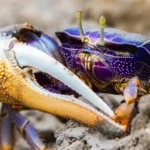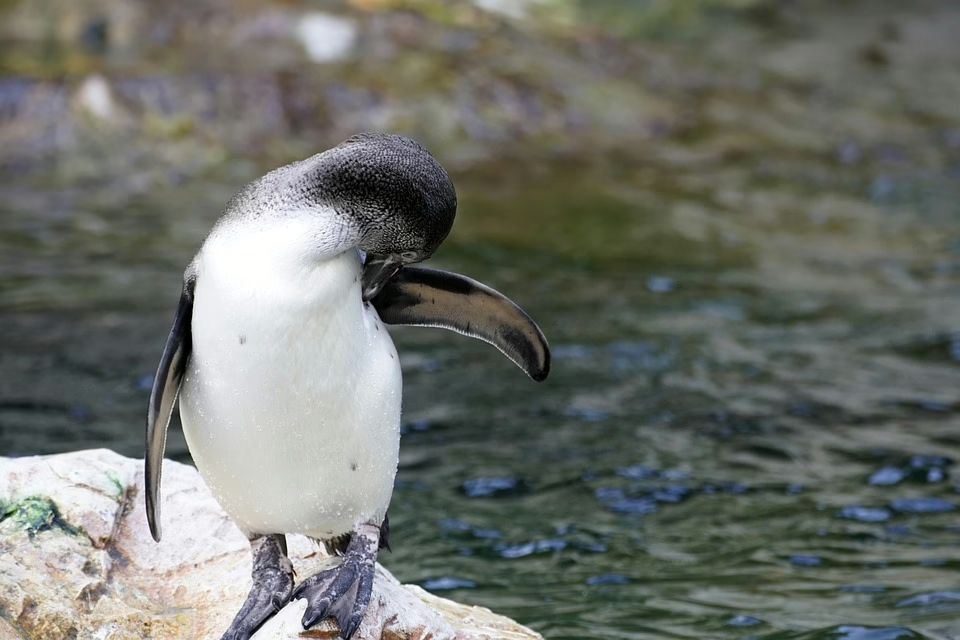From Pixels to Ecosystems: The Impact of Natural Biology Mods on Game Design
Introduction
In the evolving landscape of video game design, the integration of natural biology concepts has emerged as a transformative trend. This article explores how natural biology mods—modifications that introduce biological elements, behaviors, and ecosystems into video games—are reshaping design philosophies and player experiences. From pixelated sprites to dynamic ecosystems, these mods are influencing both game mechanics and narratives, blending the virtual with the natural world.
The Evolution of Game Design
Game design has come a long way since the early days of simple pixel art in games like Pong and Pac-Man. As technology advanced, so did the potential for creating immersive gaming experiences. The introduction of 3D graphics, complex narratives, and intricate worlds led to a more profound engagement with players. Yet, one area that remained largely unexplored until recently was the incorporation of ecological and biological realism into game mechanics.
The Role of Mods in Modern Gaming
Mods, or modifications, are user-generated alterations of video games that can enhance or completely change gameplay. The modding community has allowed players to experiment with game elements in ways that developers may not have considered. Natural biology mods are among the most innovative, bringing real-life biological principles into digital environments. This fusion of science and gameplay adds depth, realism, and, often, a moral dimension to gaming experiences.
Key Examples of Natural Biology Mods
One of the most notable examples of natural biology mods is Eco, a multiplayer survival game where players must understand and manipulate ecosystems to thrive. Players must engage in responsible resource management, animal husbandry, and even farming—all while being aware of the ecological impact of their actions. In contrast, Minecraft has seen numerous mods that introduce realistic biological processes, such as realistic plant growth, animal breeding mechanics, and ecosystem dynamics, enhancing player engagement with the environment.
The Science Behind Natural Biology Mods
Natural biology mods are built upon principles from ecology, biology, and environmental science. These mods often incorporate real-world biological processes, such as photosynthesis in plants, predation, competition among species, and even symbiotic relationships. The relevance of bioethical considerations, such as sustainability and the impact of human activities on ecosystems, is also present in many of these mods.
Ecosystem Interactions
At the core of many natural biology mods is the concept of ecosystem interactions. Developers and modders often use simulation models to represent relationships within an ecosystem. For example, in Eco, the introduction of a new species can lead to a cascade of effects, altering the balance of the environment. This concept encourages players to think critically about their actions and the potential consequences on the world around them.
Trophic Levels and Species Dynamics
Another vital aspect of natural biology mods is the simulation of trophic levels—how energy flows through different levels of an ecosystem, from producers to consumers. Mods like Ecosystem in Minecraft simulate these dynamics by introducing food webs, predator-prey relationships, and population fluctuations. Players’ interactions with these systems can lead to emergent behaviors, prompting them to adapt their strategies and rethink their actions within the game.
Balancing Gameplay and Realism
One of the main challenges with incorporating natural biology into game design is balancing gameplay with scientific authenticity. Players desire engaging experiences that are fun, yet rooted in real-world principles. Designers must carefully consider how much realism to incorporate without sacrificing entertainment value.
The Simplicity-Complexity Paradox
As games become more complex, there’s a danger that players may become overwhelmed, leading to frustration rather than enjoyment. Successful natural biology mods often strike a delicate balance between simplicity and complexity. They present fundamental biological concepts in an accessible way while allowing room for deeper exploration for players who wish to engage with these systems.
Feedback Loops and Player Engagement
Natural biology mods often rely on feedback loops, where player actions lead to dynamic changes in the game environment. For instance, if players harvest too many resources without considering sustainability, they may face consequences, such as resource depletion or ecological collapse. This feedback encourages players to adopt more sustainable practices, reflecting real-world challenges in environmental management.
The Narrative Dimension
Natural biology mods do not only affect gameplay mechanics; they also play a significant role in shaping narratives within games. As players interact with ecosystems and make choices that impact their environment, they become more invested in the story—often reflecting real-world ethical dilemmas.
Ethical Considerations in Game Design
Many natural biology mods introduce ethical considerations regarding human impact on the environment. Games like Eco challenge players to reflect on their choices, promoting deeper engagement with issues such as climate change, extinction, and resource depletion. This framing encourages players to think critically about their role in the ecosystem, both virtual and real.
Storytelling Through Gameplay
Incorporating biological mechanics into gameplay allows designers to tell stories in new ways. The narrative emerging from players’ interactions with ecosystems can be rich and varied, as choices lead to different outcomes. Players become active participants in shaping the storyline, resulting in a dynamic, collaborative narrative experience.
The Future of Natural Biology Mods
The potential for natural biology mods is immense, with the future promising even more innovative integrations of biological principles into gaming. As technology advances, so too does the opportunity to create more immersive, educational experiences that resonate with players.
The Role of Artificial Intelligence
Artificial intelligence (AI) is poised to play a crucial role in the development of natural biology mods. With AI, developers can create more sophisticated simulations of ecosystems, allowing for emergent behaviors that mirror real-life interactions. Machine learning algorithms can even be employed to generate adaptive ecosystems that respond to player choices in real time.
Advances in Graphics and Simulation
As graphics technology continues to advance, the potential for creating visually stunning representations of ecosystems will only grow. Combining realistic graphics with intricate biology models enables developers to create engaging, lifelike environments that captivate players.
Conclusion
The impact of natural biology mods on game design is profound, influencing everything from gameplay mechanics to narrative structure. By modeling ecological principles and incorporating ethical considerations, these mods foster a deeper connection between players and the virtual worlds they inhabit. As the intersection of biology and gaming continues to evolve, the potential for creating meaningful, engaging, and educational experiences will expand, ensuring that players not only have fun but also gain insight into the complexities of the natural world. The journey from pixels to ecosystems is just beginning, and the possibilities are boundless.
Modern Footnote Sources
- Thoms, K. “The Role of Mods in Game Design: The Digital Renaissance.” Game Studies, vol. 19, no. 3, 2019, pp. 45-62.
- Carter, T. “Natural Biology in Video Games: A New Frontier for Design.” Journal of Game Design Theory, vol. 12, no. 4, 2020, pp. 234-250.
- Jennings, L. “Emerging Trends: The Integration of Ecology in Game Mechanics.” Digital Game Research Association, 2021.
- Jordan, J. “Ethics and Gameplay: The Moral Dilemmas of Natural Biology Mods.” Ethics in Digital Play, Spring 2022, pp. 112-128.
- Michaelson, A. “AI and Ecosystem Simulation: Future Directions in Game Development.” Artificial Intelligence in Gaming, Fall 2023, pp. 56-70.


























Add Comment